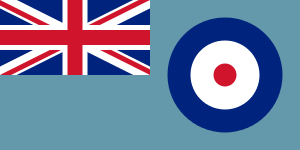RAF other ranks
The term used in the Royal Air Force to refer to all ranks below commissioned officer level is Other Ranks (ORs). It includes Warrant Officers, non-commissioned officers (NCOs) and airmen.
Ranks
| NATO Code | OR-9 | OR-8 | OR-7 | OR-6 | OR-5 | OR-4 | OR-3 | OR-2 | OR-1 | ||||||||||||||||||||||||||||||||||||
|---|---|---|---|---|---|---|---|---|---|---|---|---|---|---|---|---|---|---|---|---|---|---|---|---|---|---|---|---|---|---|---|---|---|---|---|---|---|---|---|---|---|---|---|---|---|
| (United Kingdom) (Edit) |
 |
 |
No equivalent |
|
 |
|
 |
 |
|
 |
No insignia | ||||||||||||||||||||||||||||||||||
| Master aircrew | Warrant officer | Chief technician | Corporal | Lance corporal RAF Regiment only |
Leading aircraftman/woman | Aircraftman/Woman | |||||||||||||||||||||||||||||||||||||||
| Abbreviation | MAcr | WO | FS | Chf Tech | Sgt | Cpl | LCpl | SAC(T) | SAC | LAC | AC | ||||||||||||||||||||||||||||||||||
Origins
Upon the formation of the Royal Air Force in 1918, rank titles and badges for ORs were adopted from the British Army, specifically the Royal Flying Corps (RFC). The RFC ranks of Warrant Officer Class I, Warrant Officer Class II, Flight Sergeant, Sergeant and Corporal were directly adopted, although the four-bladed propeller above the Sergeants' and Flight Sergeants' chevrons was dropped. The double-bladed propeller used as the badge of rank for an RFC Air Mechanic 1st Class was introduced as the trade classification badge for Leading Aircraftman. The rank of Aircraftman replaced the RFC rank of Air Mechanic 2nd Class.
Changes in 1939—Warrant Officers
In 1939, the ranks of Warrant Officer Class I and Warrant Officer Class II were combined as a single rank, Warrant Officer. RAF warrant officers were given equivalent status to the continuing Army rank of Warrant Officer Class I.
Changes in 1946—Aircrew
On 1 July 1946, NCOs serving as aircrew were assigned different rank badges which distinguished them from ORs in ground trades. The new ranks were:
| Master Aircrew | equivalent to Warrant Officer | Eagle within wreath below Royal Arms |
| Aircrew I | equivalent to Flight Sergeant | Three 6-pointed stars within wreath below eagle below crown |
| Aircrew II | equivalent to Sergeant | Three 6-pointed stars within wreath below eagle |
| Aircrew III | equivalent to Sergeant | Two 6-pointed stars within wreath below eagle |
| Aircrew IV | equivalent to Sergeant | One 6-pointed star within wreath below eagle |
| Aircrew Cadet | for trainee aircrew | Empty wreath below eagle |
Changes in 1950—Technicians and Aircrew
In 1950, a new grading system for technicians was introduced. This involved the creation of the following ranks:
- Master Technician (for Warrant Officers in technical trades)
- Chief Technician (for Flight Sergeants in technical trades) with three inverted chevrons surmounted by a crown
- Senior Technician (for Sergeants in technical trades) with three inverted chevrons
- Corporal Technician (for Corporals in technical trades) with two inverted chevrons
- Junior Technician with one inverted chevron
Also in 1950, the unpopular NCO aircrew ranks were abolished, although Master Aircrew was retained as a rank. Aircrew I became Flight Sergeant Aircrew and Aircrew II, III and IV became Sergeant Aircrew. Both new ranks adopted a gold eagle above the chevrons to permit continuing distinction from ground trades. Aircrew cadets wore the eagle on its own.
 |  |  |
| | | |
| Master Aircrew | Flight Sergeant Aircrew | Sergeant Aircrew |
Changes in 1951—Junior Ranks
On 1 January 1951, two junior ranks were introduced:
- Senior Aircraftman/Senior Aircraftwoman with a triple-bladed propeller.
- Leading Aircraftman/Leading Aircraftwoman with a double-bladed propeller (this had previously been only a trade classification and not a rank)
Changes in 1964—Technicians
In 1964, the technician ranks were abolished, with the exception of Junior Technician and Chief Technician, the latter becoming an intermediate rank between Sergeant and Flight Sergeant for Technical Trades. Junior Technicians adopted the four-bladed propeller as their badge of rank and Chief Technicians adopted a treble chevron surmounted by a four-bladed propeller as their rank insignia. Master Technicians, Senior Technicians and Corporal Technicians became Warrant Officer, Sergeant and Corporal respectively. The ORs structure became:
- Warrant Officer / Master Aircrew
- Flight Sergeant / Flight Sergeant Aircrew
- Chief Technician
- Sergeant / Sergeant Aircrew
- Corporal
- Junior Technician
- Senior Aircraftman / Senior Aircraftwoman
- Leading Aircraftman / Leading Aircraftwoman
- Aircraftman / Aircraftwoman
Changes in 2005—phasing out of Junior Technician
From 2005 onwards, no more airmen have been promoted to Junior Technician. Although there are currently personnel in the rank of Junior Technician, once they have all been promoted or discharged from the RAF, the rank will cease to be used. From March 2005, SACs in technical trades who had attained the Operational Performance Standard were promoted to SAC(T) and given a new badge of rank, consisting of the three-bladed propeller inside a circle. This new rank was introduced, to distinguish airmen trained to work unsupervised from those who were not, and is equivalent to the old Junior Technician rank.
Introduction of Lance Corporal
On 1 April 2010, the RAF Regiment introduced the rank of Lance Corporal for current SACs who undertake the role of section second-in-command/fire team commander. This gives them more authority on the ground, as well as a better pay band. It seems that the rank will not be moving to other trades, and will be solely in the RAF Regiment.[1]
See also
- British Army Other Ranks rank insignia
- Comparative military ranks of World War I
- Comparative military ranks of World War II
- Comparative military ranks
- List of Royal Air Force members
- Military rank
- Ranks and insignia of NATO Air Forces Enlisted
- Royal Navy ratings rank insignia
Footnotes
External links
| ||||||||||||||||||||||||||||||||||||||||||||||




